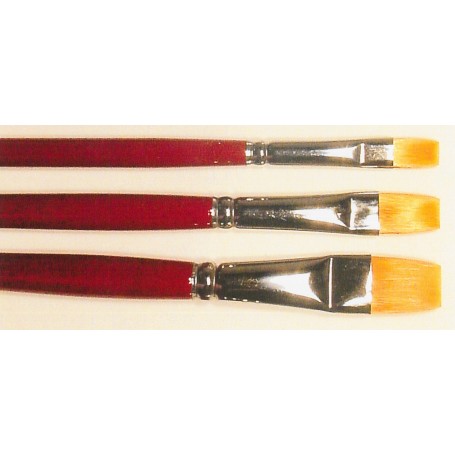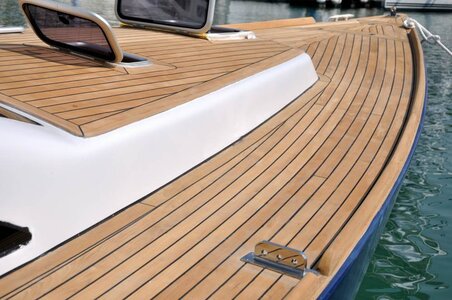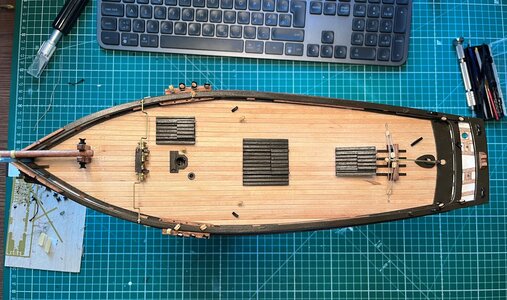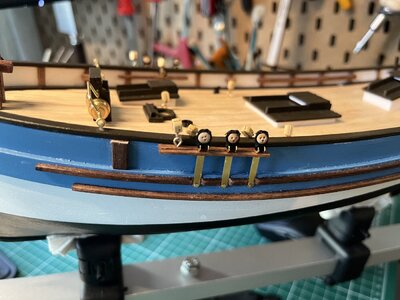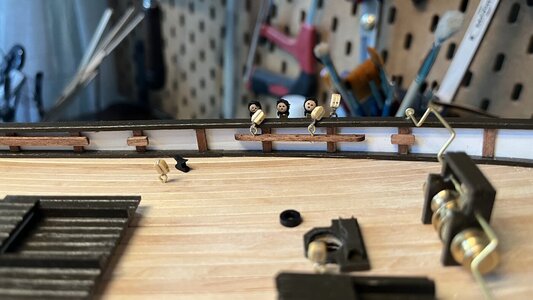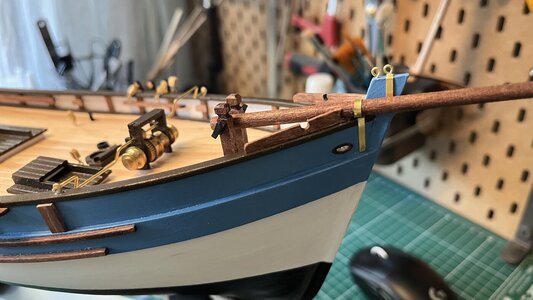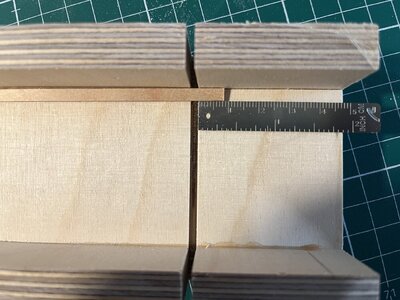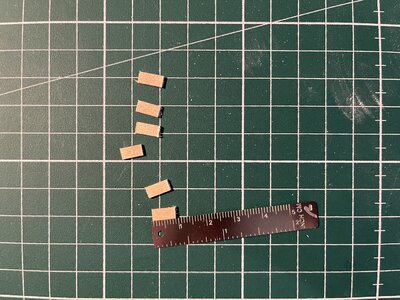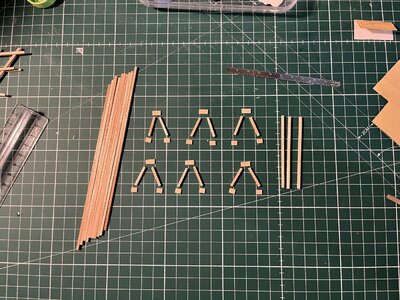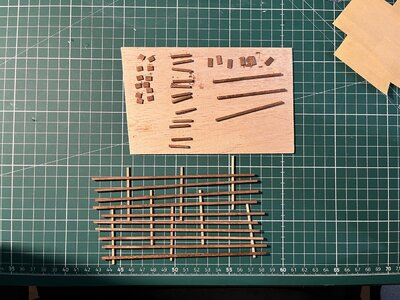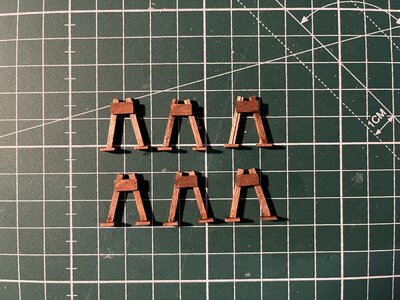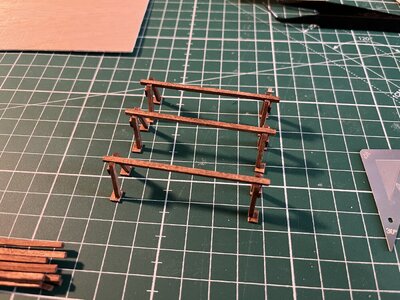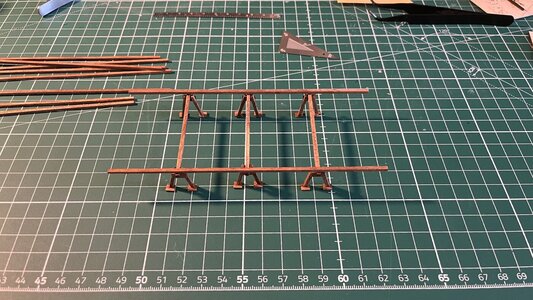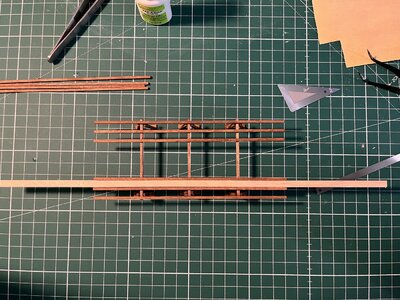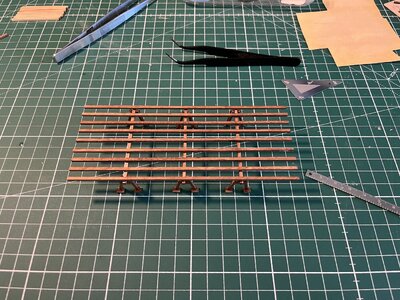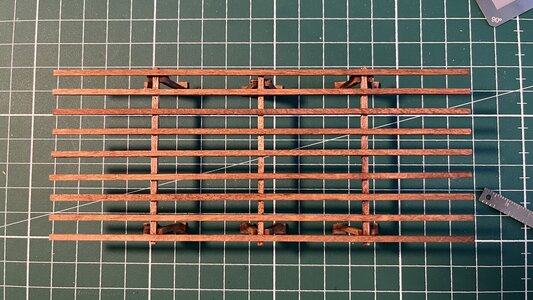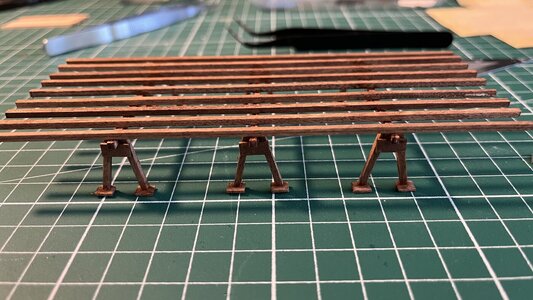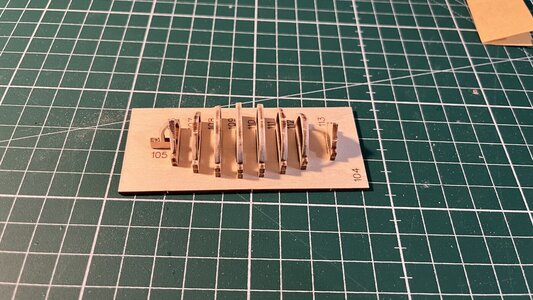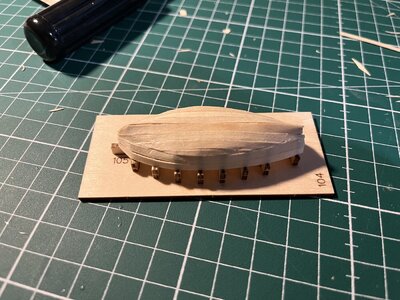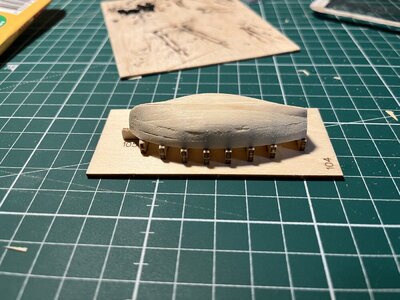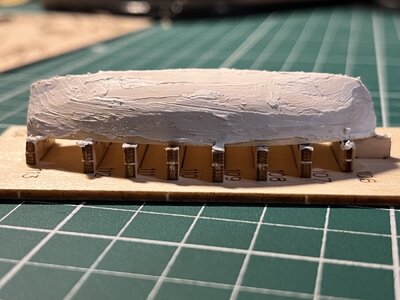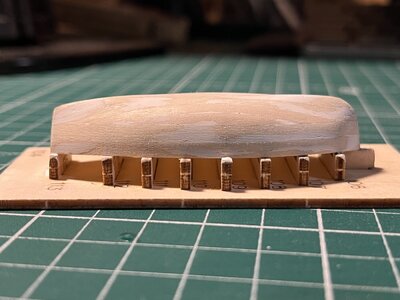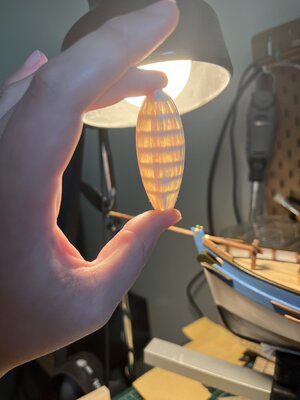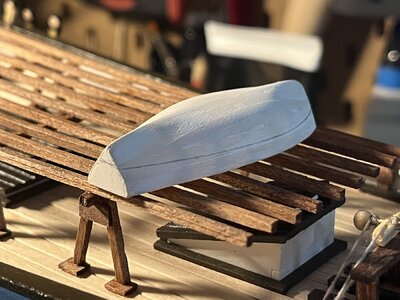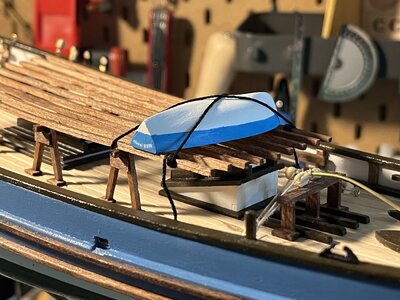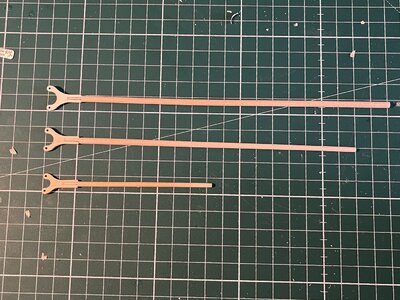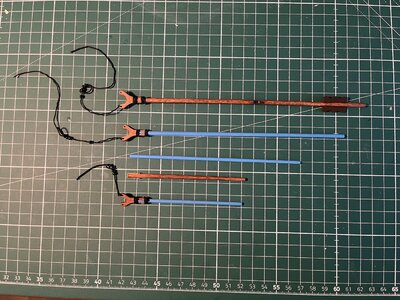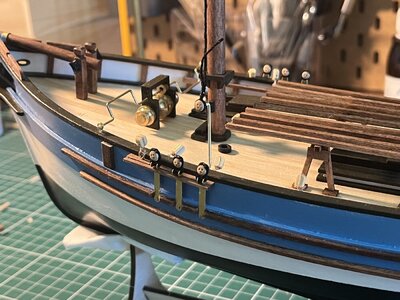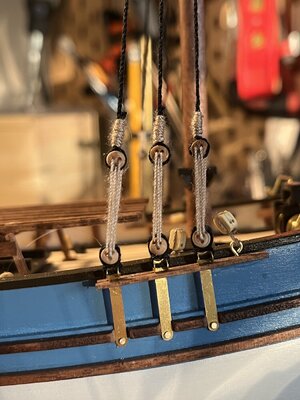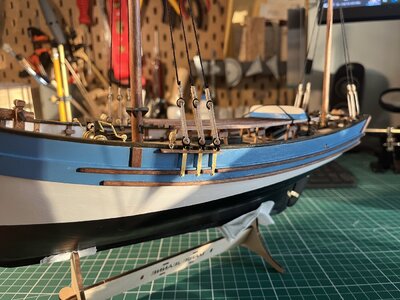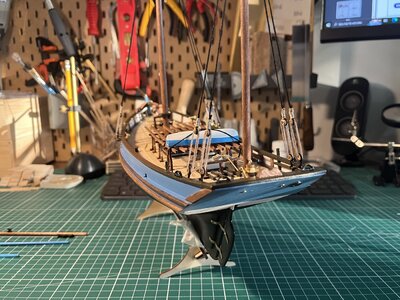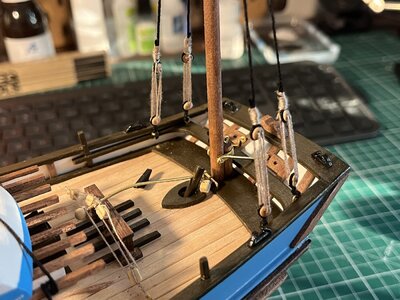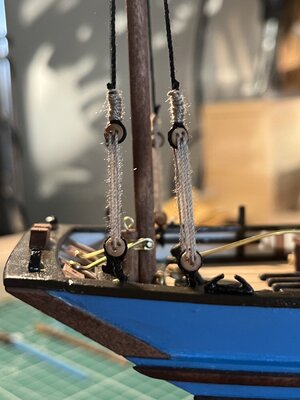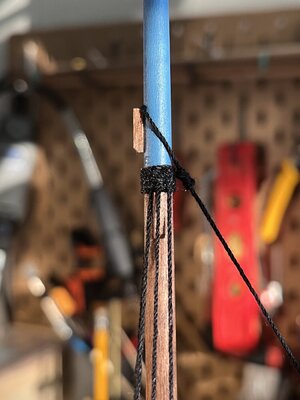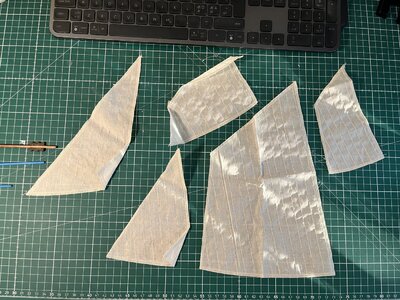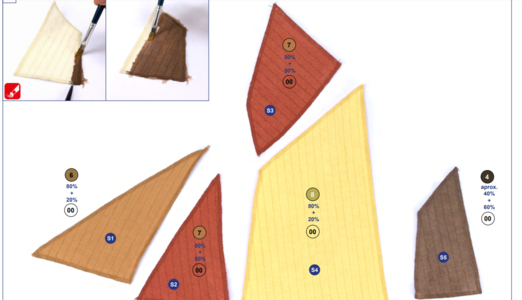- Joined
- Jan 1, 2023
- Messages
- 73
- Points
- 88

Hello all,
After importing my phone pictures to the computer and finding out it is quite convenient I have decided to start this build log about half way through. This is my third build after HMY Britannia 1:64 by Mamoli and Muscongus Bay Lobster Smack 1:24 by Model Shipways.
The kit is part of Artesania Latina's New Generation of ship models. I do not know what that means exactly, but I am very happy with the kit quality and instructions which features a lot of pictures and is available to download to have on my screen whilst working on the build. It is a nice contrast with the quality and instructions of the Mamoli ship which had me looking more at others' build logs than the actual instructions.
I am relatively new to this and tips/tricks are welcome .
.
Starting with assembling the "skeleton" of the ship and placing planks on the deck:
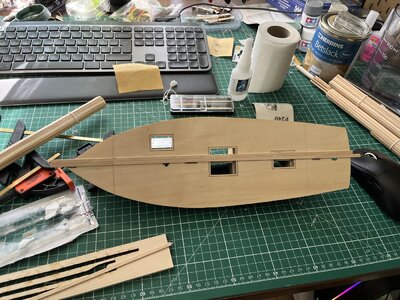
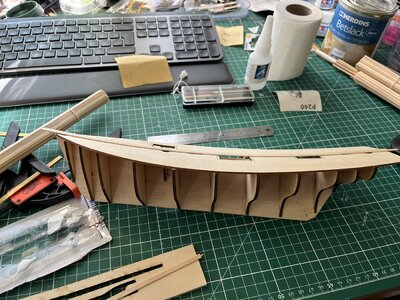
Time jump to finishing the planking and doing the first rough sanding:
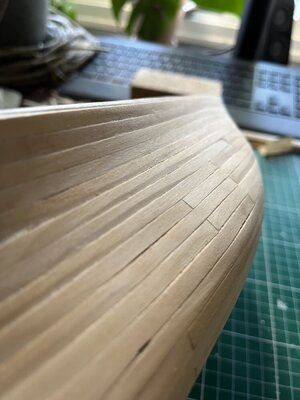
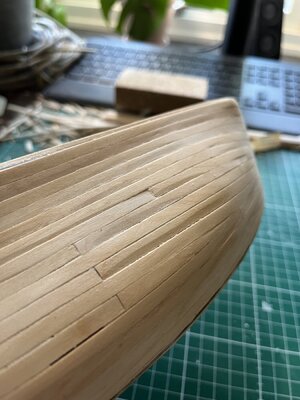
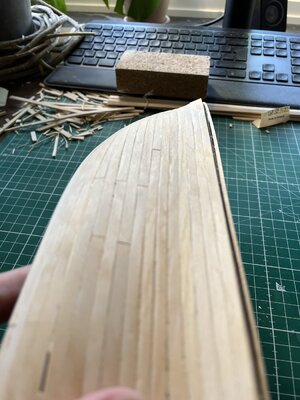
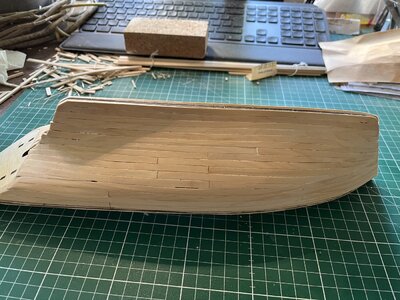
Painted the hull and put a single coat of half-matte varnish as well as started on the rub rail and other wooden detalis. The wood is painted with a "Burnt Umber" colour or dyed with the "Sapele" colour from Artesania. All paints/dye used are supplied by Artesania for this build.
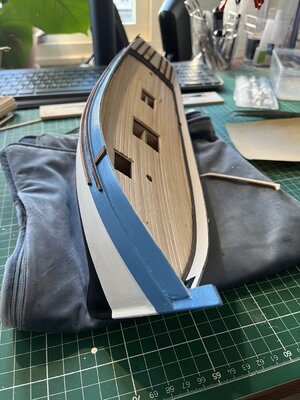
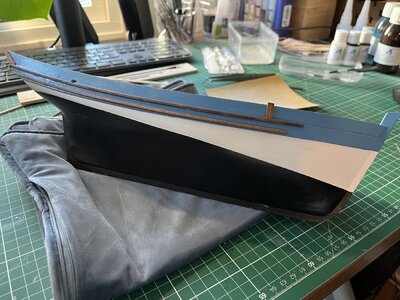
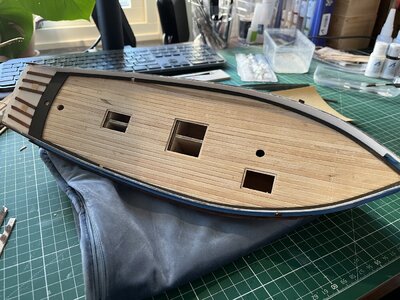
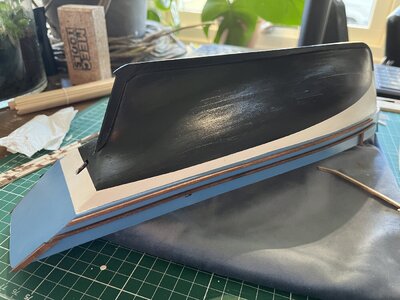
Attached the rudder and here we can see how I made a mistake with making a rough transition to the stern post when planking/sanding/using putty, forcing me to bend the rudder hinges in a sharp angle to fit to the ship. Had to use lots of glue and a hammer which makes the brass look less shiny than I wanted. Thinking about ways to polish this up without damaging the paint.
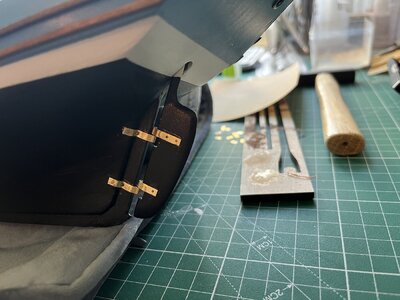
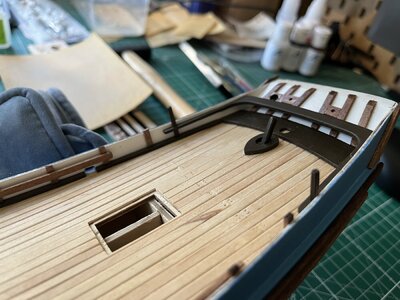
Installing the hatches, would be interesting to know what each were used for. Artesania recommends using their micro shapers, but I simply sanded the edges of the planks round:
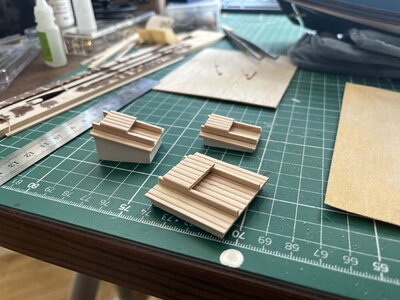
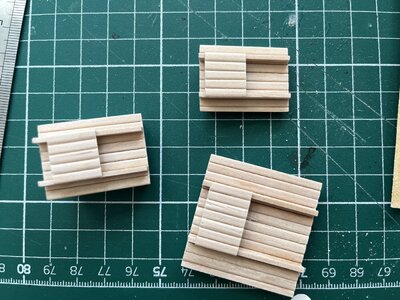
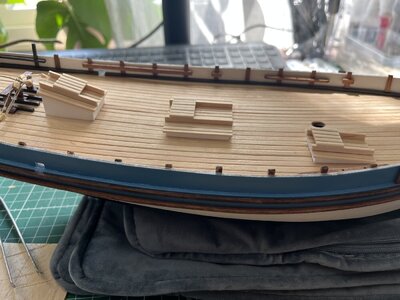
Fast forward to installing and painting the cap rail, cathead, anchor windlass and other details on the bulwark. Finished everything with a single coat of half-matte varnish to protect it while I work. Started on the bowsprit:
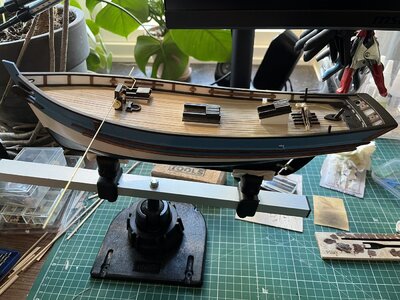
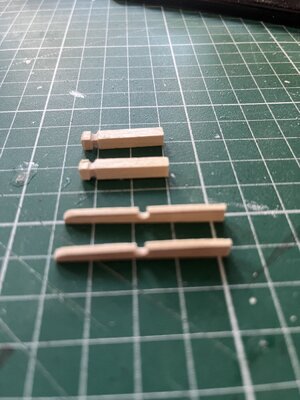
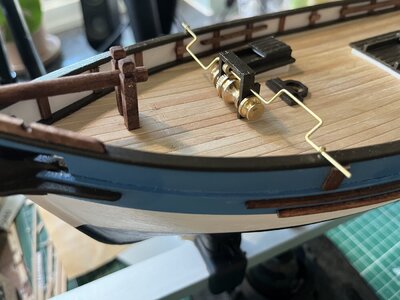
After importing my phone pictures to the computer and finding out it is quite convenient I have decided to start this build log about half way through. This is my third build after HMY Britannia 1:64 by Mamoli and Muscongus Bay Lobster Smack 1:24 by Model Shipways.
The kit is part of Artesania Latina's New Generation of ship models. I do not know what that means exactly, but I am very happy with the kit quality and instructions which features a lot of pictures and is available to download to have on my screen whilst working on the build. It is a nice contrast with the quality and instructions of the Mamoli ship which had me looking more at others' build logs than the actual instructions.
I am relatively new to this and tips/tricks are welcome
Starting with assembling the "skeleton" of the ship and placing planks on the deck:


Time jump to finishing the planking and doing the first rough sanding:




Painted the hull and put a single coat of half-matte varnish as well as started on the rub rail and other wooden detalis. The wood is painted with a "Burnt Umber" colour or dyed with the "Sapele" colour from Artesania. All paints/dye used are supplied by Artesania for this build.




Attached the rudder and here we can see how I made a mistake with making a rough transition to the stern post when planking/sanding/using putty, forcing me to bend the rudder hinges in a sharp angle to fit to the ship. Had to use lots of glue and a hammer which makes the brass look less shiny than I wanted. Thinking about ways to polish this up without damaging the paint.


Installing the hatches, would be interesting to know what each were used for. Artesania recommends using their micro shapers, but I simply sanded the edges of the planks round:



Fast forward to installing and painting the cap rail, cathead, anchor windlass and other details on the bulwark. Finished everything with a single coat of half-matte varnish to protect it while I work. Started on the bowsprit:



Last edited:




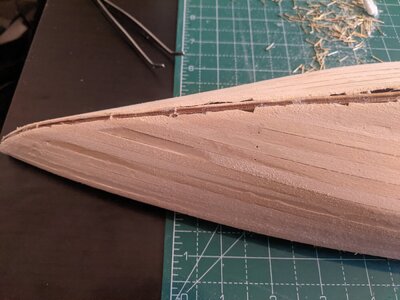
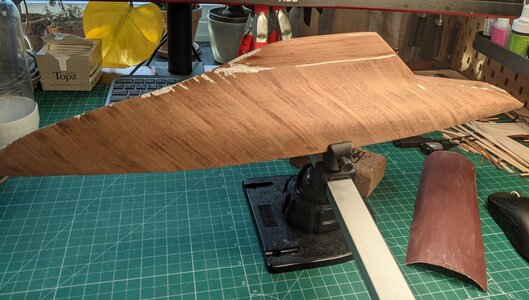
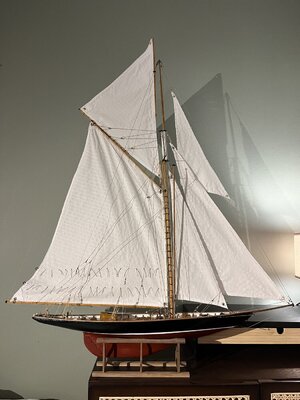
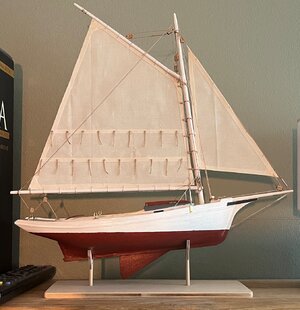
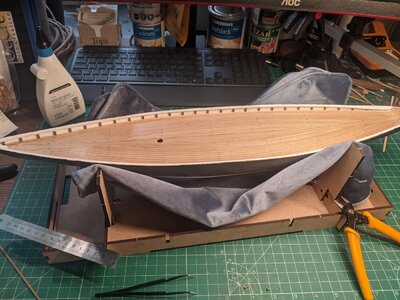
 So by that time I was mostly scratch building and then got the big idea of making it into a Diorama (my first) But that's a whole OTHER story. Sometimes it's better not to know what you're letting yourself in for!
So by that time I was mostly scratch building and then got the big idea of making it into a Diorama (my first) But that's a whole OTHER story. Sometimes it's better not to know what you're letting yourself in for!